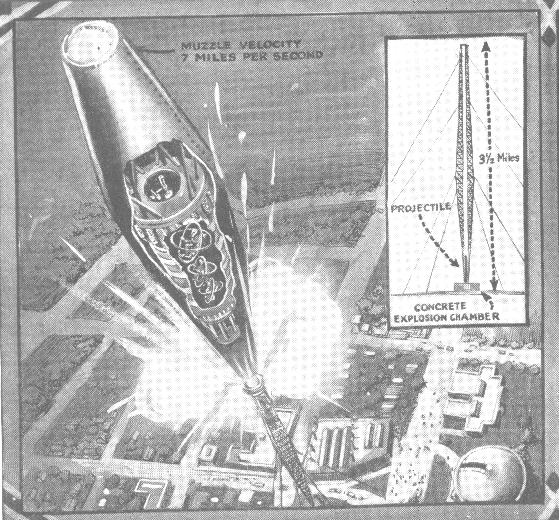How much fun will be gone when the Ages have given over all their treasure, when the bowels of the centuries have yielded up their secrets... What, then, shall become of our thrills? When there are no more uncharted seas to sail? ... Then, no doubt, we shall literally, as we have always metaphorically, hitch our wagons to the stars and attempt the sasconnading of the Heavens.
-- Rudolph Valentino (1924)
Some Early Schemes
for Interplanetary Travel:
Attaining Escape
Velocity
[The following ideas are from an article
in the February 1924 issue of Science and Invention. ]
[Links to literature are to The
Gutenberg Project.]

[In Jules Verne's 1865 novel, From
the Earth to the Moon, a capsule is shot
to the moon from a huge cannon.]

[Edward Everett Hale used a giant
flywheel to launch his satellite in "Brick
Moon,"
published in 1870.
"Q. again suggested the method of shooting off the
moon. It was not to be by any of your sudden explosions.
It was to be done as all great things are done,--by the
gradual and silent accumulation of power. You all know
that a flywheel--heavy, very heavy on the circumference,
light, very light within it--was made to save up power,
from the time when it was produced to the time when it
was wanted."]

[The idea of using the force from
photons hasn't been discarded entirely. Some theorists today propose such
a system to push solar sails on interstellar spacecraft.]





